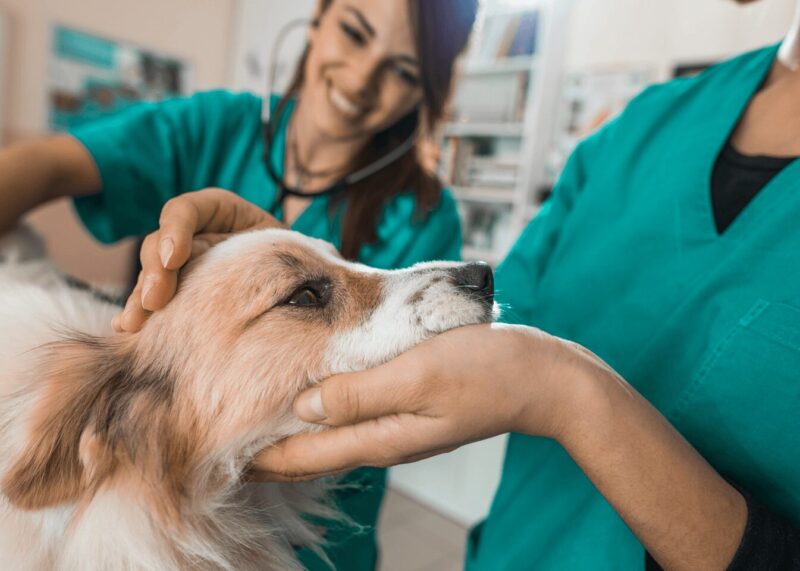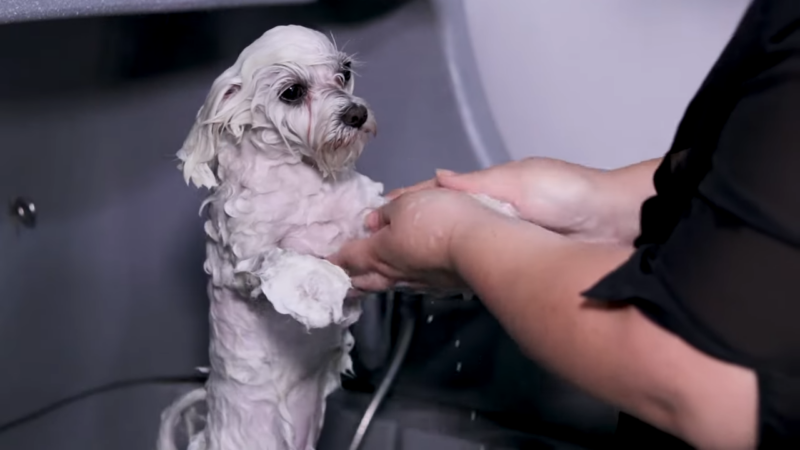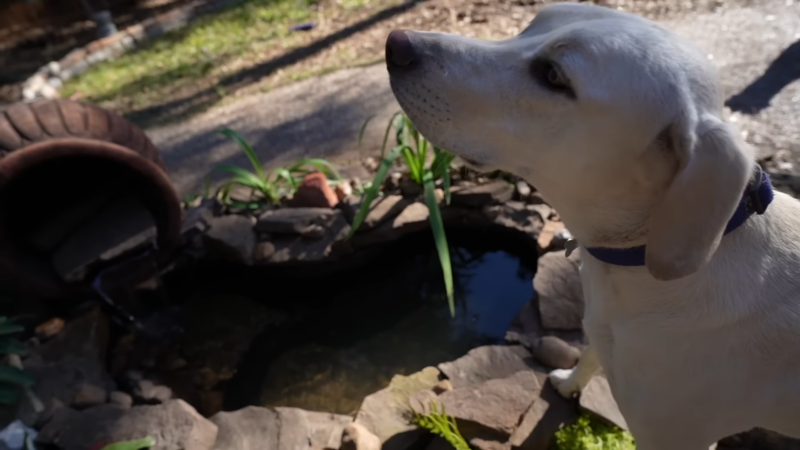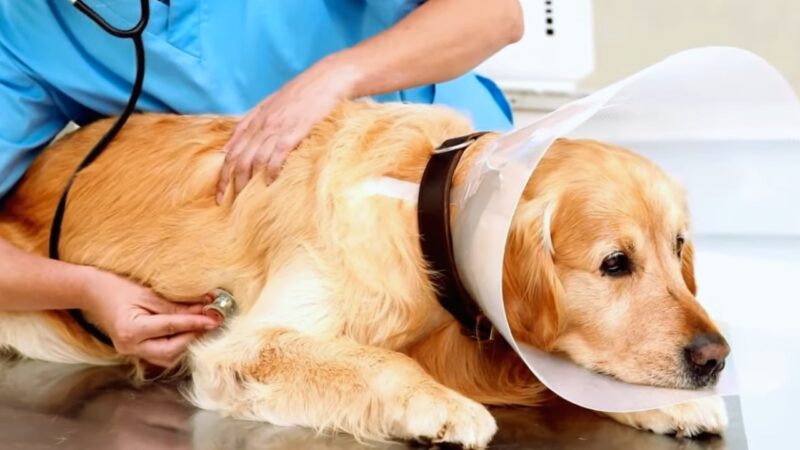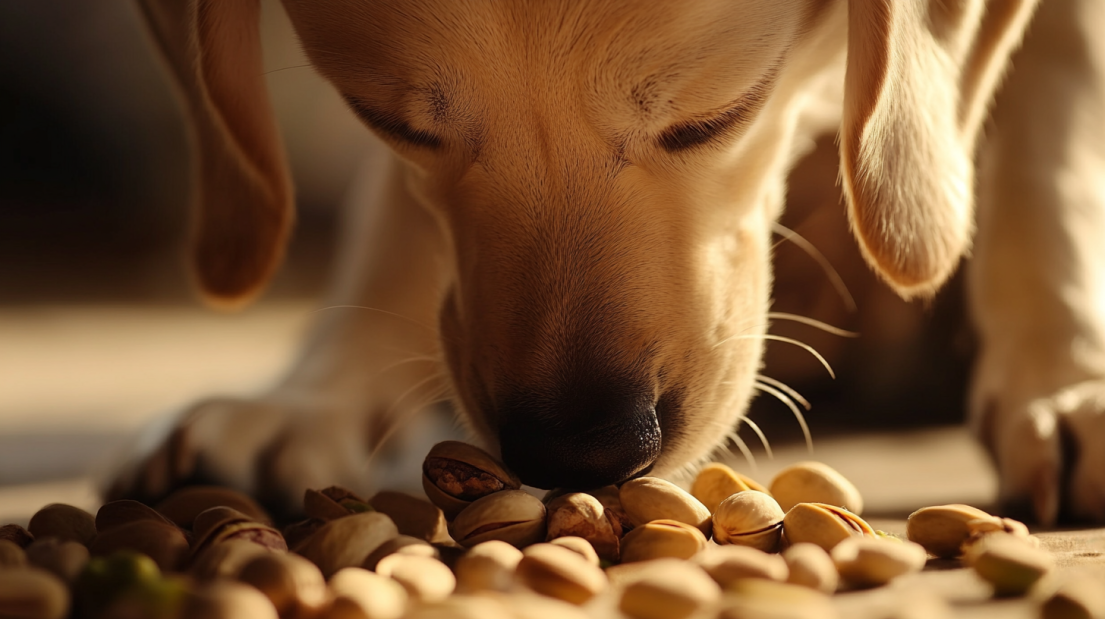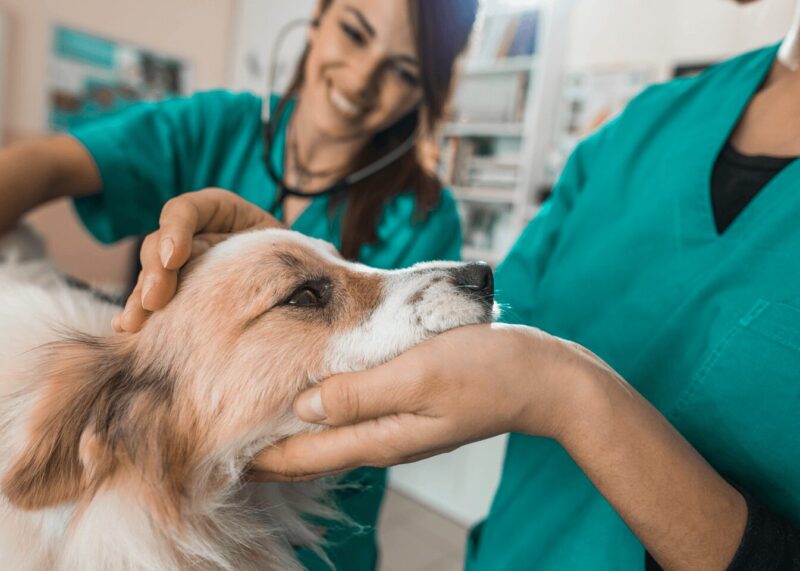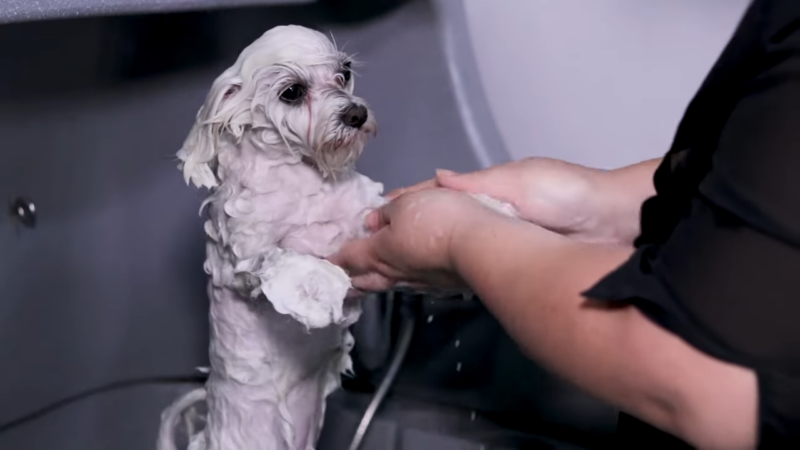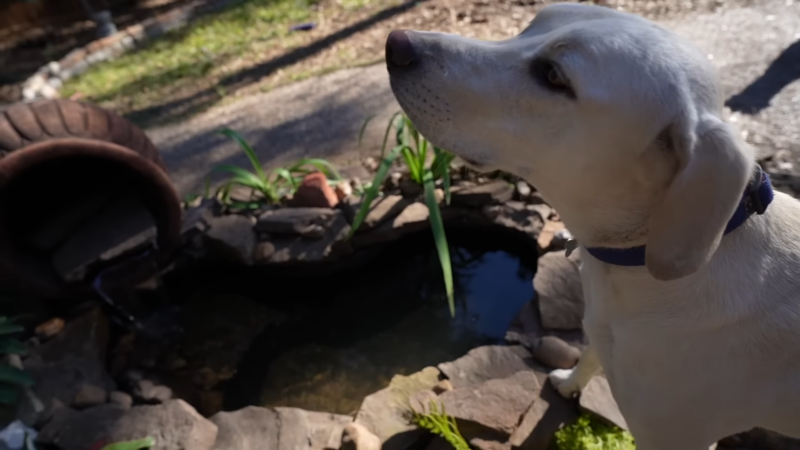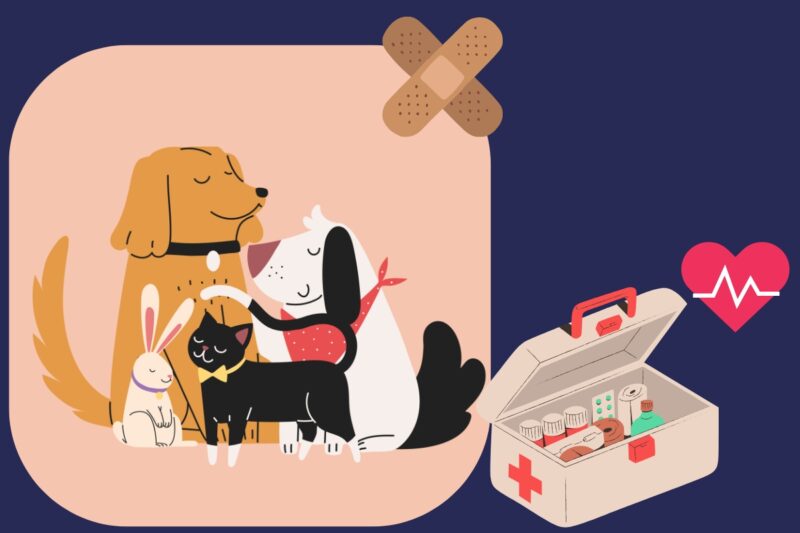
-
 Anita Kantar
Anita Kantar
- Published:
- Updated: April 16, 2024
- Category: Pet Health and Care
Share Post:
Alright, pet parents, let’s look into something super important yet often overlooked: the pet first-aid kit.
Just like we need bandaids for those unexpected scrapes, our pets need their version of a boo-boo kit. And no, I’m not just talking about a couple of treats to distract them from their minor ouchies. We’re going all in, so let’s make sure we’re prepared for anything from a tiny splinter to the big emergencies.
Key Takeaways
What Are the Essential Items in The First-Aid Kit?
1. Gauze, Bandages, and Adhesive Tape
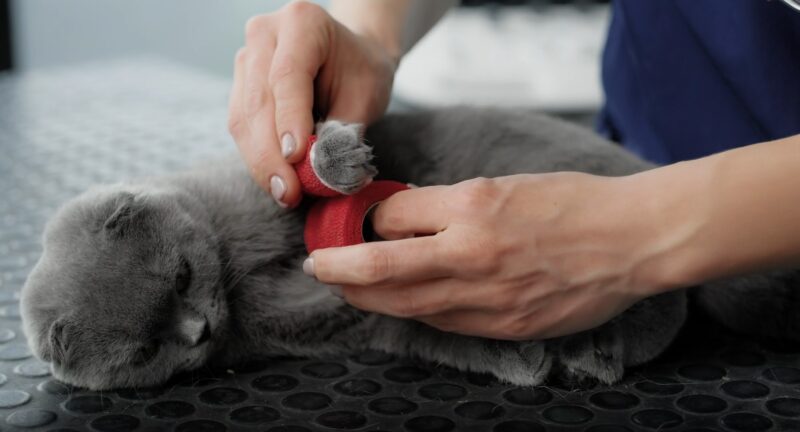
Let’s start with the ABCs of first-aid kits. Gauze and bandages are useful for almost every type of injury. Make sure to choose non-stick bandages to avoid fur entanglements, because let’s face it, untangling fur is no fun for anyone involved. And don’t forget adhesive tape – not for your pup’s mouth but to secure those bandages.
Fun fact: Dogs have about 60% more bones than humans. That’s a lot of potential boo-boos to cover.
2. Hydrogen Peroxide
No first-aid kit is complete without hydrogen peroxide, a hero in preventing infections. It is necessary for cleaning wounds and preventing infections, as it is so powerful at killing bacteria. Just remember, it’s for external use only.
3. Antibiotic Ointment
For those pesky cuts and scrapes, an antibiotic ointment is your go-to. To further prevent infection, an antibiotic ointment should be applied to wounds. This serves as an additional layer of protection against bacteria.
4. Milk of Magnesia
Did your dog decide that the chocolate cake was too tempting to resist? Well, milk of magnesia, paired with activated charcoal, can be your savior. Also, in cases of ingestion of toxins it can help absorb and neutralize the poison. Just make sure to consult with a vet to get the dosage right.
Did you know? Chocolate poisoning is among the top reasons dogs visit the ER. Keep those sweets out of reach.
5. Digital Thermometer
Knowing if your pet has a fever can be crucial in emergencies. Digital thermometer provides a clear indication of fever or illness, aiding in timely medical intervention
Pro tip: Label it for pet use only to avoid any mix-ups.
6. Pill Organizer
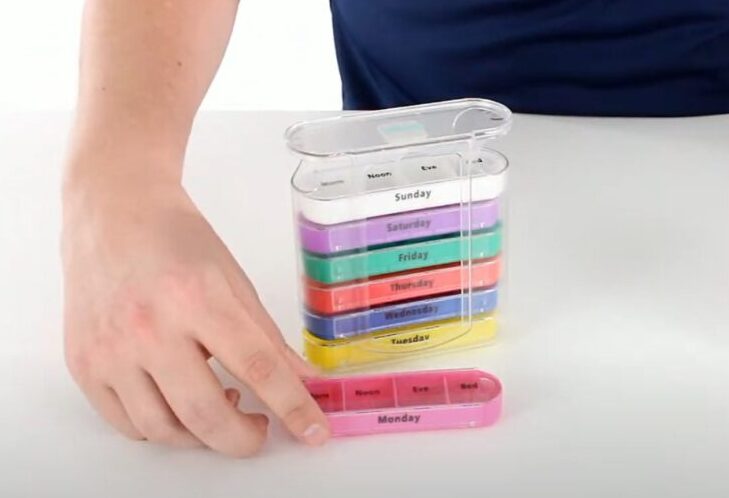
If your pet is on any medication, a moisture-proof pill organizer is a lifesaver. It helps manage dosages and schedules efficiently, which is particularly useful for ensuring that pets receive their medications on time. It’s like the personal assistant you didn’t know your pet needed, keeping everything organized and accessible.
7. Scissors and Tweezers
Scissors aren’t just for arts and crafts. Scissors are necessary for cutting gauze or bandages to the required size, and tweezers are invaluable for removing foreign objects such as splinters or ticks from your pet’s skin.
8. Magnifying Glass
It is great for closely inspecting small wounds or removing tiny objects embedded in your pet’s skin.
9. Travel Bowls
Hydration is key, especially in stressful situations. Portable travel bowls ensure that your pet remains hydrated.
Did you know? Dehydration can occur more quickly in pets because their bodies are made up of 75-80% water compared to humans. Signs of dehydration include loss of appetite, reduced energy levels, lethargy, panting, sunken eyes, dry nose and gums, and loss of skin elasticity.
What Are the Extra Items in The First-Aid Kit?
10. Flashlight
It is crucial for emergencies that happen at night or in low-light conditions, providing visibility for both assessment and treatment of injuries.
11. Soft Muzzle
It can prevent bites during stressful situations, ensuring the safety of both the pet and the owner during emergency care.
12. Extra Leash and Collar
Accidents happen, and leashes or collars can break. Having a spare set ensures your pet is secure and ready for any adventure – or trip to the vet.
13. Absorbent Towels
They are necessary for drying your pet or cleaning up after an injury.
14. Saline Solution
It can flush out irritants, providing relief to your pet.
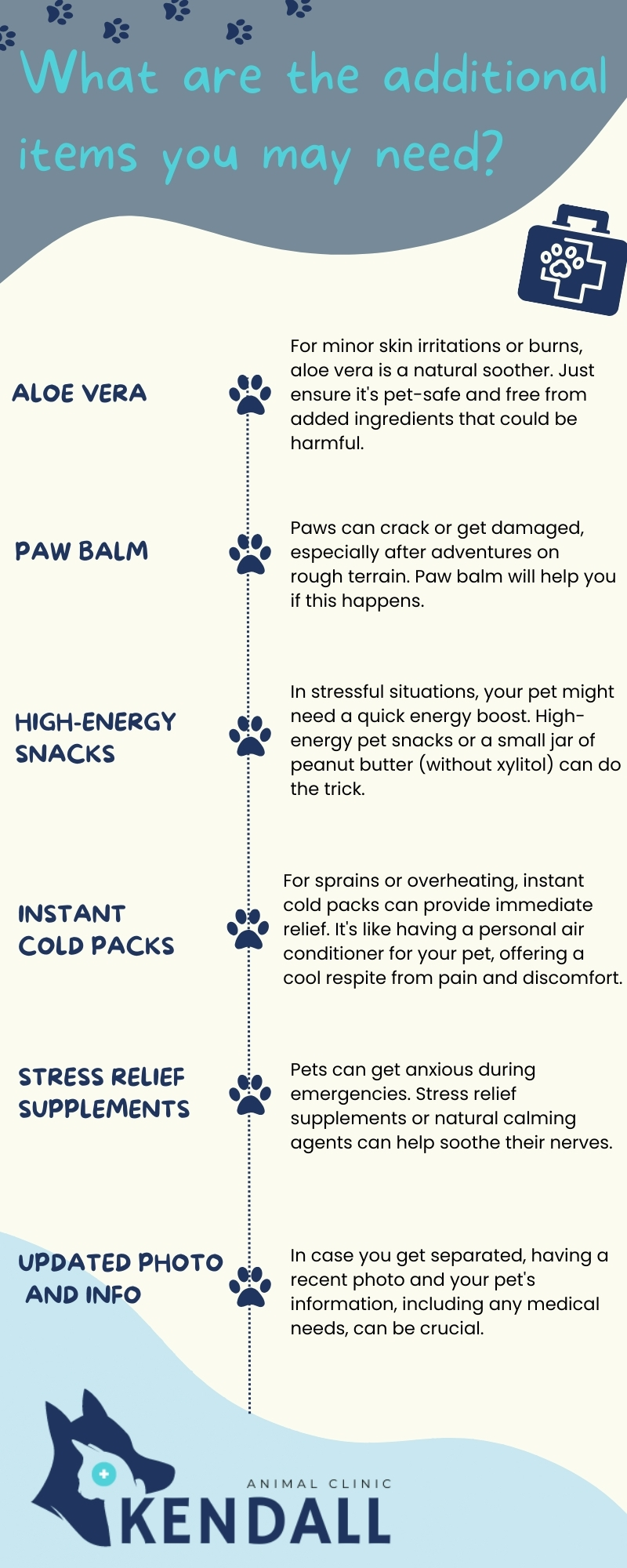
FAQs
In Conclusion
Let’s not wait until after an accident happens to think about what we need. Let’s be proactive, pet-loving people who can sleep a little easier at night, knowing we’re ready for whatever comes our way. Remember, the best pet first-aid kit is the one you never have to use, but having one could make all the difference.
Related Posts:
- What To Do If You Drop Your Hamster Accidentally? -…
- Girl Hamster Names For Your Little Pet! - Funny &…
- Can Hamsters Eat Mangoes? - Sweet Treat for Your Pet
- Top Travel Destinations for You and Your Pet
- Signs Your Pet Needs Immediate Veterinary Attention…
- Can Hamsters Eat Apples?- Dietary Considerations for…


